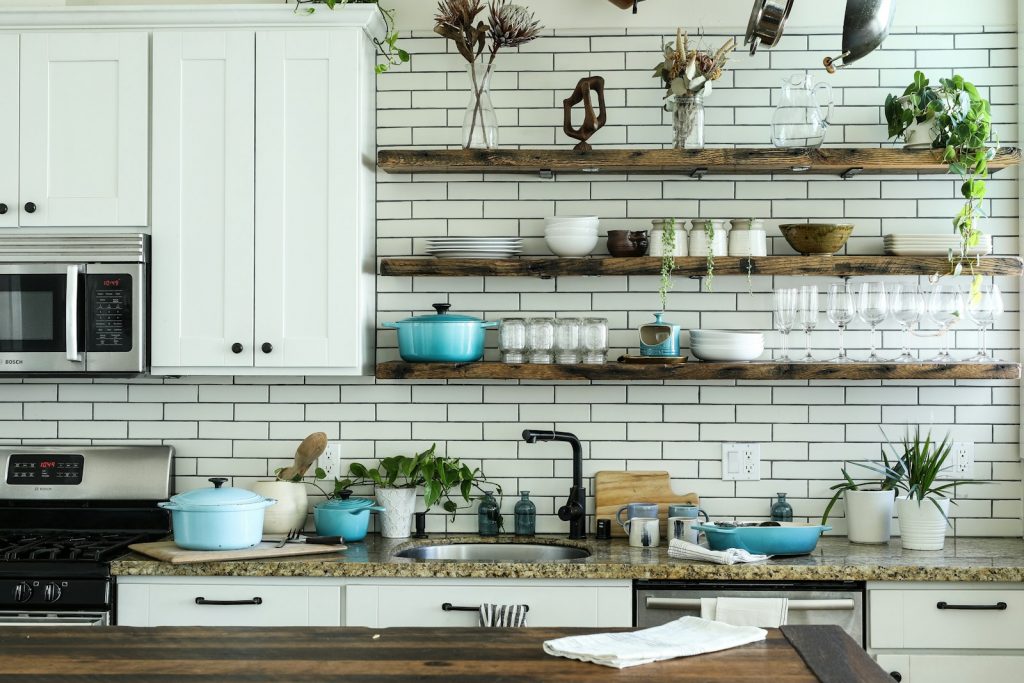Understanding Eco-Friendly Living
Eco-friendly living is an increasingly essential concept as households seek to minimize their environmental impact. By implementing eco-friendly practices, individuals can significantly reduce waste and conserve vital resources. Households that embrace sustainability contribute to a healthier planet by decreasing pollution, reducing greenhouse gas emissions, and conserving water. For instance, reducing reliance on single-use plastics can save an average household between $100 and $200 annually while minimizing plastic waste. Additionally, choosing solid personal care products over liquids often encapsulates both cost-saving and eco-friendly benefits by reducing plastic packaging [Source: Money Talks News].
Moreover, the shift toward sustainable living isn’t merely about major overhauls; small, consistent changes can lead to significant impacts. Adopting practices such as meal planning can drastically cut food waste, which is a leading contributor to environmental degradation [Source: Simply Sustainable Home]. Furthermore, energy-saving measures in the kitchen, like using energy-efficient appliances or practicing mindful cooking, can lower energy consumption and bills [Source: Simply Sustainable Home].
Ultimately, eco-friendly households not only contribute to environmental preservation but also enhance the quality of life. Simple changes such as composting, using eco-friendly cleaning products, and reducing water usage can generate a profound cumulative effect on both personal finances and the environment [Source: Simply Sustainable Home].
Simple Swaps for a Greener Home
Switching to eco-friendly alternatives in your home not only benefits the environment but also enhances your health. Here are some simple swaps that can help you make a meaningful impact:
- Reusable Containers: Replace single-use plastic containers with durable, reusable alternatives. This switch can significantly reduce your exposure to harmful chemicals like BPA and phthalates, which can leach into food, especially when heated in plastic. Households can save between $100 and $200 annually by cutting down on disposable wraps and bags (Source).
- Solid Personal Care Products: Opt for solid alternatives to liquid soaps and shampoos that often come in plastic packaging and may contain microplastics. The Environmental Working Group emphasizes that choosing solid personal care products is an effective way to minimize plastic waste and save money (Source).
- Bamboo Toothbrushes: Consider swapping out your plastic toothbrush for a bamboo one. This small change helps reduce plastic waste and is biodegradable, thus lessening your environmental footprint.
- Reusable Shopping Bags: Ditch the plastic grocery bags in favor of reusable ones. This change not only helps keep plastics out of landfills but also encourages a habit of sustainability.
- Compostable Dishware: When hosting gatherings, choose compostable plates and utensils instead of their plastic counterparts. This creates less waste and can aid in your composting efforts.
- Beeswax Wraps: Instead of plastic wrap, use beeswax wraps for food storage. They are reusable and contribute to reducing plastic waste in your kitchen.
Implementing these simple swaps can create a cleaner, greener home while prioritizing your health and the health of the planet. For more tips on making sustainable choices in your kitchen, consider reading 15 Easy Eco-Friendly Kitchen Swaps.
Sustainable Cleaning Products
Sustainable cleaning products are not only beneficial for the environment, but they also ensure a healthier living space. Creating DIY cleaning supplies with natural ingredients can significantly reduce chemical exposure in your home. Here are a few effective recipes and eco-friendly brand recommendations.
DIY Recipes for Sustainable Cleaning Supplies
- All-Purpose Cleaner: Combine equal parts white vinegar and water in a spray bottle. For added scent and antibacterial properties, include a few drops of essential oils like tea tree or lavender.
- Baking Soda Scrub: Mix baking soda with water to create a paste for scrubbing surfaces like sinks and tubs.
- Natural Glass Cleaner: Use 2 cups of water mixed with 1/2 cup of vinegar and 1/2 teaspoon of dish soap for a streak-free shine.
- Floor Cleaner: Combine 1/2 cup of vinegar with a gallon of warm water for mopping floors.
- Carpet Deodorizer: Sprinkle baking soda on carpets and let it sit for 15 minutes before vacuuming.
For detailed recipes and more variations, check out our article on DIY Natural Kitchen Cleaners.
Brands Focused on Sustainability
Many cleaning product brands embrace sustainability practices. For instance:
- The Inkey List: Known for its commitment to education on sustainability and incorporating eco-friendly ingredients into their formulations [Source: Cosmetics Business].
- Grimoire: A queer-led skincare brand that launched with a focus on sustainable products [Source: Beauty Packaging].
- Procter & Gamble: Adjusting its focus by emphasizing sustainable practices in product development despite recent challenges [Source: New York Post].
By opting for DIY solutions and supporting sustainable brands, you contribute to a healthier home and planet. For further insights on making your home eco-friendly, visit this practical guide to sustainable living.
Waste Reduction Techniques
To significantly minimize household waste, implementing effective waste reduction techniques is essential. Here are several strategies you can adopt:
1. Composting
Composting recycles organic waste, reducing methane emissions from landfills by up to 30% [Source: Reader’s Digest].
2. Recycling
Recycling conserves natural resources, saving energy and reducing greenhouse gas emissions. The EPA estimates that recycling one ton of aluminum saves enough energy to power a house for nearly a year [Source: EPA].
3. Upcycling
Upcycling creatively repurposes waste items into useful products, giving items a new life [Source: Hometalk].
4. Meal Planning
Smart meal planning can prevent spoilage, reducing food waste by up to 50% [Source: Simply Sustainable Home].
5. Use of Reusable Products
Investing in reusable products can save households between $100 and $200 annually [Source: Money Talks News].
6. Educate and Involve Family
Educating your family about waste reduction can create a more sustainable household.
By employing these strategies, you’ll contribute to a significant reduction in your household waste and overall environmental impact. For more practical eco-friendly tips, check out our guide on zero waste dishwashing and homemade cleaners.
The Power of Energy Efficiency
Energy efficiency is crucial for creating a sustainable home and can lead to significant cost savings. Here are practical measures to enhance your home’s energy efficiency:
1. Use Energy-Saving Appliances
Investing in Energy Star-certified appliances can drastically reduce your energy consumption [Source: U.S. Department of Energy].
2. Promote Natural Light
Maximizing natural light can significantly reduce your reliance on artificial lighting [Source: BBC].
3. Optimize Heating and Cooling Systems
Regular maintenance of heating and cooling systems improves efficiency and can reduce energy consumption [Source: U.S. Department of Energy].
By integrating these energy-efficient practices into your home, you can contribute to a more sustainable future while enjoying lower energy bills and increased comfort. For more insights on sustainable living, check out our guide on how to make your home truly eco-friendly.
Sources
- Beauty Packaging – Queer-Led Skincare Brand Grimoire Debuts With Sustainable Products
- BBC – The Shift To Natural Light In Homes
- Cosmetics Business – The Inkey List Impact Report 2024: Key Takeaways
- EPA – Recycling Basics
- Hometalk – Upcycle Ideas
- New York Post – P&G Slashing 7K Jobs
- Money Talks News – Double Detox: Microplastic-Fighting Habits That Pay Off Fast
- Reader’s Digest – How to Compost
- Simply Sustainable Home – DIY Natural Kitchen Cleaners: Effective Eco-Friendly Recipes
- Simply Sustainable Home – How To Make Your Home Truly Eco-Friendly
- Simply Sustainable Home – 15 Easy Eco-Friendly Kitchen Swaps To Reduce Waste Today
- Simply Sustainable Home – Smart Meal Planning: How to Stop Food Waste in Your Kitchen
- U.S. Department of Energy – Energy-Saving Appliances


